Muscle weakness
Table of Contents
What Is Muscle Weakness?
Muscle weakness is a declination of muscle strength. Its causes are many and may be divided into conditions that have real or perceived muscle weakness. Serious muscle weakness, just like muscular dystrophy and inflammatory myopathy, is a first sign of a variety of skeletal muscle diseases. It happens in disorders of the neuromuscular junction, namely myasthenia gravis. Muscle weakness may also is because of low levels of potassium and other electrolytes within muscle cells.
It may be a symptom of an underlying health condition if a person experiences chronic muscle weakness or muscle weakness without a clear cause or a normal explanation.
When the brain signals a muscle through the spinal cord and nerves, voluntary muscle contractions are generally generated.
If the brain, nervous system, muscles, or the connections between them are injured or affected by the disease, the muscles can not contract usually. This may lead to muscle weakness.
Causes of muscle weakness
Addison’s disease
An individual with Addison’s disease can experience chronic fatigue or loss of appetite. This happens when an individual’s adrenal glands do not generate enough of the hormones cortisol and aldosterone. Furthermore, to muscle weakness, other usual symptoms of Addison’s disease involve:
- Chronic fatigue
- Weight loss
- Loss of appetite
- Stomach pain
Anemia
Anemia happens when a person’s hemoglobin levels are reasonable, frequently because of an iron deficiency. Other symptoms of anemia involve:
- Dizziness
- Shortness of breath
- Headaches
- Cold hands and feet
- An irregular heartbeat
Chronic fatigue syndrome
- This diagnosis tends to be unexplained fatigue or fatigue that a physician may not relate to a medical condition.
- Another title for it is myalgic encephalomyelitis.
- Individuals with chronic fatigue syndrome feel severe tiredness and sleep problems.
- Other symptoms involve muscle weakness, pain, dizziness, and problems concentrating.
Electrolyte disorders or imbalances
Electrolytes help make sure that the muscles, nerves, heart, and brain all function correctly. Having different levels of electrolytes like calcium, potassium, sodium, and magnesium — may cause muscle weakness. Examples of electrolyte disorders involve hypokalemia or hyperkalemic periodic paralysis.
Risk factors for an electrolyte imbalance involve:
- Loss of fluids through sweating, vomiting, or diarrhea
- Chemotherapy
- A poor diet
- Taking antibiotics or immunosuppressants
Diabetes
Diabetes happens when the body does not make sufficient insulin or does not use insulin in the correct way. It may cause nerve injury that can outcome in muscle weakness. Diabetes may also leads to a variety of other symptoms related to muscle weakness, involving:
- Frailty
- Impaired mobility
- Fatigue
Fibromyalgia
Fibromyalgia is a chronic disorder that causes muscle pain and weakness in addition to other symptoms, like:
- Constant fatigue
- Affected memory
- mood changes
Hypothyroidism
Hypothyroidism, or an underactive thyroid, may cause muscle weakness and cramping. These symptoms can get worse with exercise and physical activity. Other symptoms involve:
- Weight gain
- Feeling cold
- Dry skin and hair
- Fatigue
- Irregular or heavy menstrual periods
- A slow heart rate
- Joint and muscle pain
- Depression or mood disorders
- Fertility problems
- A physician may frequently diagnose this and other thyroid conditions with a blood test.
Kidney diseases
- Problems with kidney function may cause metabolic waste products, like creatinine, to build up in the muscles.
- This may outcome in muscle twitching and weakness.
Sleep disorders
- Sleep disorders, like narcolepsy and insomnia, may outcome in daytime muscle weakness and fatigue.
- Individuals who require to stay in bed because of a medical condition can also experience muscle weakness.
- This outcome is from not using the muscles as daily as normal.
- An individual can also be at risk of sleep problems.
Infections
Influenza may cause muscle weakness, a fever, and a sore throat. Some infectious diseases may cause muscle weakness. They involve:
Influenza:
- Influenza (flu) virus may cause temporary muscle weakness as well as a fever, sore throat, cough, and fatigue.
Lyme disease:
- This inflammatory disease comes after a bite from an infected tick.
- Symptoms may be acute or chronic and involve a fever, rash, neck stiffness, numbness, muscle weakness, and fatigue.
Epstein-Barr virus:
- The Epstein-Barr virus may result in muscle weakness as well as not explained fatigue, skin rash, headaches, and appetite loss.
Syphilis:
- This sexually transmitted infection may cause muscle weakness, as well as headaches, fatigue, sore throat, and weight loss.
Toxoplasmosis:
- Toxoplasmosis is a parasitic infection that shows symptoms like headaches, fatigue, low-grade fever, and seizures.
Meningitis:
- Meningitis is a serious infection that causes inflammation in the brain and spinal cord.
- Furthermore to muscle weakness, symptoms may involve fever, neck stiffness, nausea, vomiting, and increased sensitivity to light.
HIV:
- HIV may cause progressive muscle weakness in some individuals, specifically in those who do not receive treatment.
Polio:
- Polio myositis may cause muscle weakness and sensitivity.
- Also, individuals who have had polio may feel post-polio syndrome, which outcome in muscle weakness.
Rabies:
- Rabies outcome from contact with the saliva of an infected animal.
- Symptoms may involve fatigue, headaches, agitation, confusion, and seizures, as well as muscle weakness and spasms.
Neurological conditions
Some diseases that affect the nervous system may cause muscle weakness. These conditions are frequently chronic and affect the way that individuals’ nerves transmit messages to their muscles. Examples of neurological conditions that may cause muscle weakness to involve:
Cervical spondylosis:
- Age-related changes to the cushioning spinal disks in the neck may cause cervical spondylosis.
- This puts additional pressure on nerves, resulting in muscle weakness.
Guillain-Barré syndrome:
- This infrequent neurological disorder may cause mild-to-severe muscle weakness.
Botulism:
- This infrequent condition happens because of exposure to botulinum toxin.
- It also causes growing muscle weakness.
Lambert-Eaton myasthenic syndrome:
- This autoimmune disorder happens when an individual immune system interferes with how the nerves and muscles communicate, resulting in muscle weakness.
Multiple sclerosis:
- Multiple sclerosis is an autoimmune disorder that happens when the immune system attacks and damages the nerves.
Myasthenia gravis:
- This autoimmune disorder causes the immune system to attack an individual’s muscles, which, may affect movement as well as breathing.
Amyotrophic lateral sclerosis:
- Identity as ALS, this may cause progressive muscle weakness.
Spinal cord injuries:
- Injuries to the spinal cord may interrupt communication from the nerves to the muscles.
- The effects ay based on the exact site of the injury.
Neurological conditions are frequently progressive, which means that they get worse over the period of tie. Few of these conditions also go through stages of remission, when symptoms lessen or even disappear, prior to flaring up again.
Medications
Some individuals feel muscle weakness as a result of the medicines that they take. Anyone experiencing muscle weakness as a side effect should speak to their physician prior to stopping their medication. Examples of medications that may cause muscle weakness to involve:
- Amiodarone (Cordarone)
- Antithyroid medications, like methimazole (Tapazole) or propylthiouracil
- Antiretroviral medicines, naely lamivudine (Epivir) or zidovudine (Retrovir)
- Chemotherapy medications
- Cimetidine (Tagamet)
- Corticosteroids
- Fibric acid derivatives, like gemfibrozil (Lopid)
- Interferon
- Leuprolide acetate (Lupron)
- Nonsteroidal anti-inflammatory drugs (NSAIDs), namely ibuprofen or naproxen
- Penicillin
- Statins
- Sulfonamide antibiotics
- Some illicit drugs, namely cocaine, may also cause muscle weakness.
Rare causes
Rare causes of muscle weakness involve dermatomyositis, polymyositis, and rheumatoid arthritis.
If a person’s muscle weakness is not because of any of the issues above, or if they have particular risk factors, a physician can consider infrequent causes when making their diagnosis. Infrequent causes of muscle weakness involve:
Dermatomyositis:
- This is an inflammatory muscular disorder that may cause stiff, sore, and weakened muscles.
Polymyositis:
- This generally causes weakness in the muscles near the body’s trunk, like the hip, thigh, neck, and shoulder muscles.
Rheumatoid arthritis:
- This is a chronic, inflammatory autoimmune disorder that attacks the lining of the joints. Usually, involved areas involve the hands and feet.
Sarcoidosis:
- This inflammatory condition generally affects the lung and lymph glands, causing irritated masses of tissue.
Secondary hyperparathyroidism:
- This condition frequently affects the lower limbs and causes the bone and joint pain.
Becker muscular dystrophy:
- This genetic disorder generally affects men and younger individuals and results in quick, progressive muscle weakness.
Systemic lupus erythematosus:
- Also, identify as lupus, this condition may affect various areas of the body, involving the joints, brain, heart, and lungs.
- Muscle weakness is a usual symptom of a lupus flare-up.
These conditions are not necessarily infrequent in the population, but muscle weakness is not always involved among their usual symptoms.
Causes of unexplained muscle weakness
Stress
- Stress may cause muscle aches, as well as headaches and shaking.
- Stress makes it harder for the body to fight against the disease.
- In individuals who are unwell and stressed, the muscles ache as the body struggles to combat inflammation or infection.
Symptoms of stress involve:
- Heart palpitations or an increased heart rate
- High blood pressure
- Headaches
- Shaking
- Chest pains
- Feeling breathless or hyperventilating
- Individuals may try to combat stress by learning relaxation techniques and removing themselves from stressful situations where possible.
Nutritional deficit
- Individuals can feel muscle aches and pains because they are not getting the particular nutrition from their diet.
- Vitamin D plays a particularly crucial role in ensuring that the muscles function correctly.
- Vitamin D helps with the absorption of calcium, and a deficiency may lead to hypocalcemia.
- Hypocalcemia is a condition in which the blood calcium level is low, which may affect the bones and organs in addition to the muscles.
Dehydration
- A person who is dehydrated can feel muscle aches.
- Drinking sufficient water is vital to keep the body functioning perfectly as it may rapidly start to shut down without adequate fluids.
- Dehydration causes necessary bodily functions, like breathing and digestion, to become more difficult.
- Individuals should be aware of how much water they are drinking.
- The suggested amount is 6–8 glasses of water each day.
- If hot weather or exercise causes individuals to sweat more than normal, they will require to drink more than this.
Sprains and strains
- Strains, sprains, and other injuries may cause muscle pain and discomfort.
- Individuals can find that a particular area of the body becomes stiff and achy if it is injured. Pulling muscles may also cause muscle soreness.
- Some sprains and strains do not require treatment, but a person should rest, take over-the-counter (OTC) pain relievers, or use heat packs to reduce the symptoms.
- However, if the injury is causing significant pain, restricting usual movement, or not improving with time, it is advisable to make an appointment with a doctor.
Sleep deficiencies
- A lack of sleep may have a severe impact on the body.
- Sleep permits the body to rest and recuperate, and a person’s muscles can ache if they do not get sufficient sleep.
- A lack of quality sleep may also make individuals feel sluggish and slow.
- It may affect an individual’s ability to think clearly and makes it harder for them to carry out daily tasks.
Too much physical activity
Overdoing exercise may lead to stiff, sore muscles.
The following factors may make an individual more susceptible to muscle aches and pains when exercising:
- Being unused to exercise
- Trying a new exercise
- Exercising more vigorously or for longer than usual
- Failing to warm up or stretch properly
- Infections, diseases, and hereditary conditions
Many various medical issues may cause muscle aches. Conditions that most usually affect the muscles involved:
- Anemia
- Arthritis
- Chronic fatigue syndrome
- Claudication
- Dermatomyositis
- Influenza, identify as flu
- Fibromyalgia
- Lupus
- Lyme disease
- multiple sclerosis (MS)
- Pneumonia
- mononucleosis, frequently called mono.
Mechanisms of Fatigue
- Muscle fatigue may happen in two basic mechanisms: includes within the motor units (in the essence of, motor neurons,
- peripheral nerves, motor endplates, and muscle fibers).
- Peripheral fatigue is generated by changes at or downward to the neuromuscular junction.
- The cause can be the depletion of some important substance(s)) and/or the accumulation of catabolites or other substances set free by the muscle activity.
- Central fatigue arises in the central nervous system (CNS), which reduces the neural drive to the muscle.
- It is caused by an inhibition elicited by nervous impulses from receptors (probably some type of chemoreceptors) in the fatigued muscles.
- The inhibition ay performs on the motor pathways anywhere from the voluntary centers in the brain to the spinal motor neurons.
- This type of fatigue manifests itself by a reduction in the outflow of motor impulses to the muscles.
Symptoms
- When a person experience fatigue, the force behind the muscles’ movements decreases, causing a person to experience weaker, frequently this weakness is the primary sign.
- Other symptoms connected with muscle fatigue involve:
- Soreness;
- Localized pain;
- Shortness of breath;
- Muscle twitching; trembling;
- A weak grip;
- Muscle cramps.
Diagnoses of muscle weakness
- If a person experiences muscle weakness for which there is no normal explanation, make an appointment with the doctor person may book an appointment with a primary care doctor in the nearby area.
- A person will be asked about muscle weakness, involving how long had person had it and which muscles have been affected.
- The doctor will also ask about other symptoms and the family’s medical history.
A doctor can also check:
- Reflexes
- Senses
- muscle tone
- If, they required can order one or more tests, like:
- CT scans or MRIs to examine the inner structures of the body.
- Nerve tests to assess how well the nerves are working.
- Electromyography (EMG) tests nerve activity in the muscles.
- Blood examination to check for signs of infection or other conditions.
Treatment for muscle weakness
- Once the doctor identifies the cause of the muscle weakness, the doctor will suggest proper treatment.
- The treatment plan will depend on the underlying cause of the muscle weakness, as well as the severity of the symptoms.
- Here are some of the treatment options for diseases that cause muscle weakness:
Physical therapy
- Physical therapists may record exercises to increase the quality of life if a person has conditions like MS or ALS.
- For example, a physical therapist might recommend progressive resistive exercise to help someone with MS strengthen muscles that have become weak from lack of use.
- For people with ALS, a physical therapist might suggest stretching and range of motion exercises to prevent muscle stiffness.
Chest press:
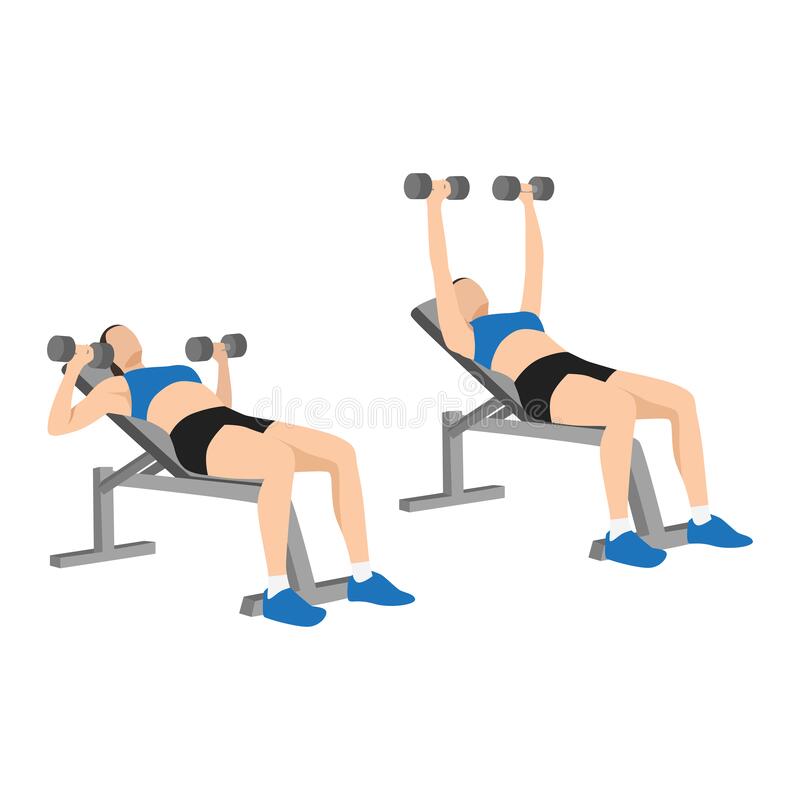
- Utilize free weights on a bench.
- Start with lying flat on the court, grasp a pair of dumbbells, and push horizontally up to the ceiling.
- Variation: Chest flies:
- Use weights lying on a bench.
- Take weights up to the ceiling, open arms to the level of the bench, and take the weights to the front of the chest, using a friendly bent-elbow hug.
Biceps curls and hammer curls:
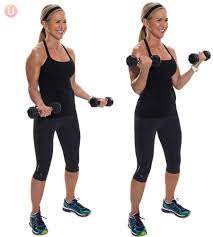
- Start with standing facing a mirror.
- Biceps:
- Take one dumbbell in both hands, held horizontally.
- Bring weights up to curl the arm, without going all the way to the top.
- Hammer curls:
- Hold weights vertically and take arms up to shoulders.
Triceps kickbacks and overhead extensions:
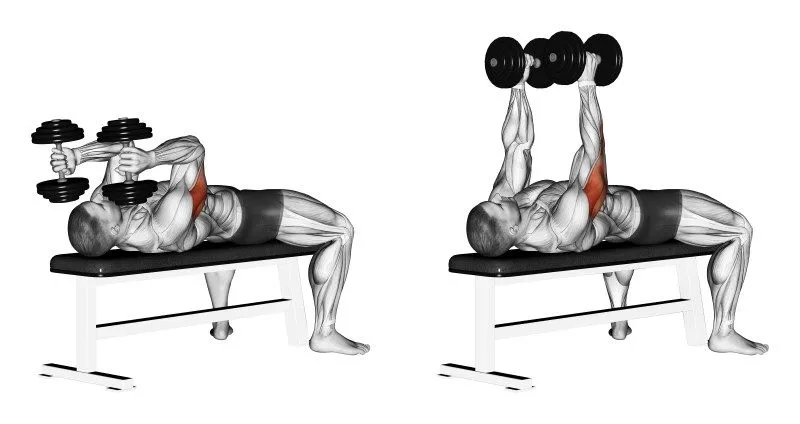
- Use a weight bench and place one knee on it.
- Bend over, with one free weight in the hand.
- Lift up the arm and bring it up to the side.
- Take the weight and kick it back to straighten t arm while keeping lifted.
- Switch sides.
- For overhead extensions, bring one heavier weight to use with two arms.
- This could be twice the weight a person used for a single arm.
- Sit on a bench and grasp the weight with both arms overhead.
- Begin with straight arms, then bend and straighten the weight behind the head.
Assisted pull-ups and dips:
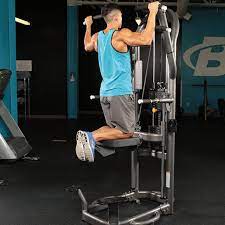
- Utilize the machine in the weight room.
- Begin with a weight heavier than people are, as this will
- give more assistance with the exercises.
- As a person become stronger, lighten the weight so a person requires less “assistance.”
Bent-over rows:

- Utilize the free weights on the bench.
- Put one knee on it and take a weight that a person may use to take down to one side.
- Row and pull the weight back up to the side.
- Change sides.
Sled Pushes
- If persons are tight for time and require a conditioning workout for the ages, then these may not be beaten.
- Pushing and pulling the prowler along turn or even hard concrete works the upper and lower body and has endless metabolic benefits that will leave a person burning fat for the rest of the week.
- Utilizing sleds as a finisher to any workout, or as their own people workout will deliver the goods.
Kettlebell Swings
- A great intro to speed and power training, swings tap into the hamstrings and glutes – muscles that are particularly jam-packed with fast-twitch muscle fibers.
- But this is not just a lower-body move.
- To dominate the kettlebell swing, the core must be super-stiff and strong throughout the movement, and the rhomboids and lats must be active.
Face Pulls
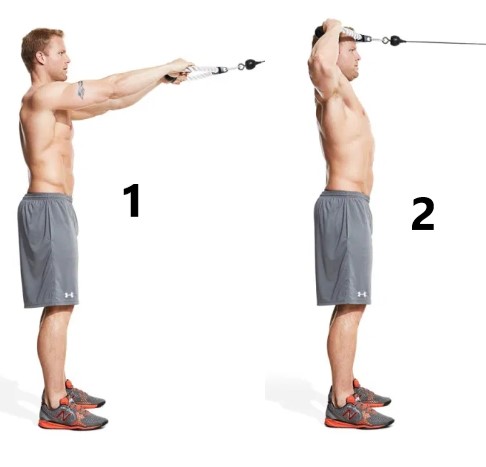
- Setting up a pair of cords on a pulley (or bands around a post) and pulling to the face sounds simple enough.
- The advantage that this movement delivers to intrinsic postural muscles makes it invaluable.
- Plus, a person may use it as a prehab or warm-up tool or include it in a workout without a hitch.
- You will feel the burn and the benefits of high repetition sets.
Farmer’s Walks
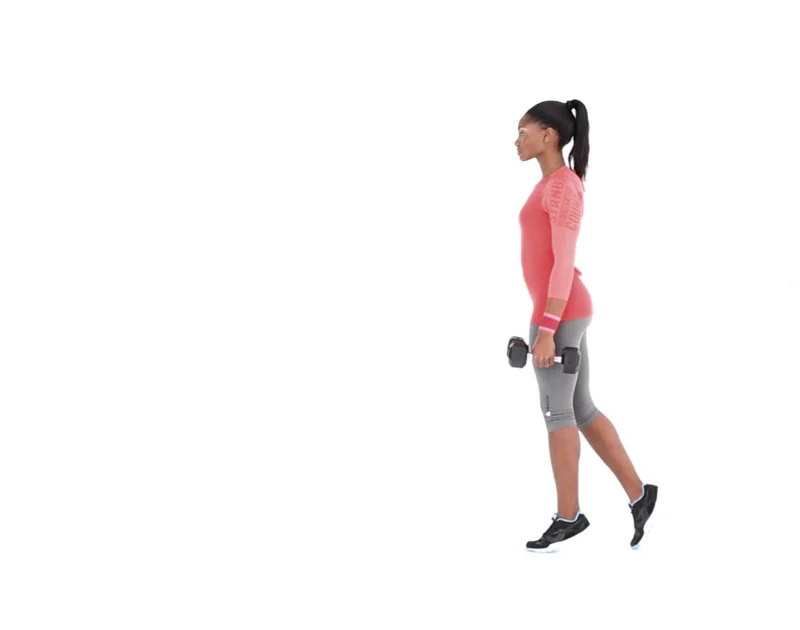
- Any loaded carry will be worth its weight in gold for the conditioning, grip strength, trap development, and body composition.
- People chose farmer’s walks since it is got the simplest instructions:
- Grasp the heaviest dumbbells a person may get hands-on, and walk briskly with good posture until a person may not.
- Throw them in for 10 to 15 minutes at the end of the workout.
Lowe limb exercise
Straight Leg Raise:

- Start with lying on the back, lift one leg 10-20cm off the floor whilst keeping the leg straight.
- Hold for 10 secs, then gently lower.
- Be sure the toes and knee is pointing straight toward the ceiling.
- Repeat 3 times and switch the leg.
Hip Extension in Prone:
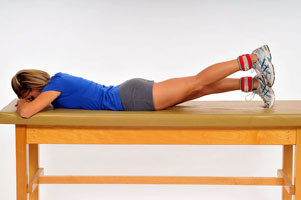
- Start with lying on the stomach with legs straight, and lift one leg 10-20cm off the floor.
- Hold for 10 secs, then gently lower it back.
- Repeat 3 times and do it on the opposite side.
Hip Abduction in Side Lying;

- Start with lying on t side, a person may keep their bottom leg slightly bent for balance.
- Lift the upper leg up 10-20cm, and be sure the knee is straight and the knee and toes are pointing forwards.
- Hold for 10 secs, then gently lower it back.
- Repeat 3 times and switch the leg.
Inner Range Quads:

- Start with lying on the back with a rolled-up towel/cushion beneath the knee.
- Push the knee into the towel and straighten the knee whilst lifting the heel off the bed.
- Hold for 10 secs, gently lower it back.
- Repeat 3 times and switch the leg.
Knee Extension in Sitting:
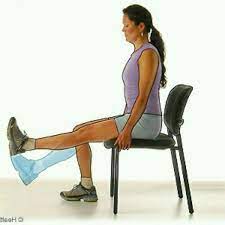
- Start with Sitting back in a chair.
- Gently raise one leg up until it is straight.
- Hold for 10 secs, then gently lower.
- Repeat 10 times and switch the leg.
Heel Raises:

- Gently rise up onto the tiptoes, hold for 10 secs then gently lower it back.
- A person may hold on to support if required.
- Repeat 5 to 1o times.
Step Ups:
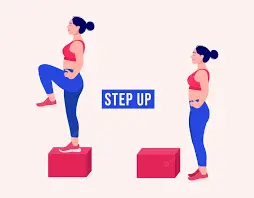
- Step up one foot at a time onto a step, then step off.
- Repeat 10 times.
Bridging:

- Start with lying flat on the back with the knees bent off.
- Lift the bottom off the bed so the legs and trunk are in a straight line.
- Hold for 10 secs.
- Repeat 5 times.
Squats:
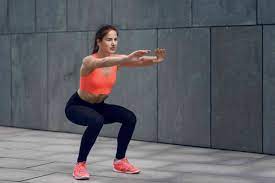
- In standing, gently bend the knees to squat down.
- Be sure the toes and knees are pointing forwards.
- Hold for 10 secs.
- Repeat 3 times.
Sit to Stand:

- Practice going from sitting to standing at a low bench or step without using the arms.
- Repeat 5 times.
Clams:
- Start within side lying with hips and knees bent, gently lift the top knee upwards whilst keeping ankles together, then gently lower back down.
- Repeat 5 times and switch the leg.
Marching in sitting
- Sit tall in a chair.
- Gently raise the legs alternately Mini squat Stand, holding onto a support.
- Squat down and at the same time permit the pelvis to move gently backward.
- Straighten the knees and hips returning to the starting position in a controlled manner.
Back muscle exercise
Exercises: Back Stretches
Supine Hamstring Stretch:
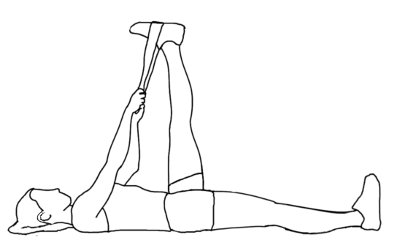
- Start with Lying on the back, starting with both knees bent.
- Muffle a rope or towel around one foot.
- While grasping both ends of the towel, gently lift one leg off the surface until a stretch is felt in the backside of the leg.
- Hold 30 seconds.
- Back to the starting position.
- Repeat 5 times on both sides. Do it 4-5 times per day.
Knee to Chest:

- Start with lying on the back with both knees bent.
- Grasp behind one knee and slowly pull the knee towards the chest until a comfortable stretch is experienced in the lower back.
- Hold for 30 seconds then back to starting position.
- Repeat 5 times on both sides.
- Do it 3 times per day.
Piriformis Stretch
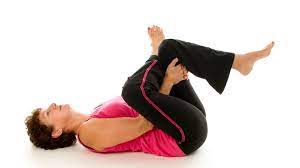
- Start with Lying on the back with both knees bent.
- Pull one knee to the opposite shoulder.
- Keep the back flat, do not twist.
- Hold 30 seconds then back to the starting position.
- Repeat 5 times on each side.
- Do it 5 times per day.
Prone Quadriceps Stretch:

- Lie on your stomach.
- Place a rope, sheet, or belt around one of the feet and pull the heel toward the buttock until a person feels a stretch in the front of the thigh.
- Hold for 10 seconds then back to the starting position.
- Repeat 3 times on each side. Perform this exercise two times per day.
Calf stretch:
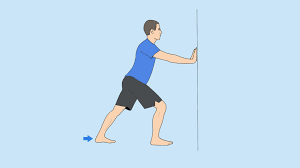
- Stand facing a wall.
- Keep up the back leg straight with the heel on the floor and the foot facing forward.
- Bend the front knee gently and lean into the wall until a stretch is felt in the calf.
- It is necessary to keep the back heel on the floor throughout the whole stretch.
- Hold 20 seconds. Return to starting position.
- Repeat 3 times on each side.
- Perform 2 times per day.
Exercises: Back Strengthening
Transverse Abdominal Contraction:
- Start with lying on the back with both knees bent, and feet flat.
- Tighten abdominal muscles by pulling the belly button towards the spine.
- Hold 20 seconds and relax.
- Repeat 15 times.
- Do it 3 times per day.
Gluteal Squeeze:
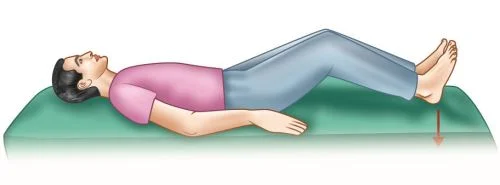
- Start by lying on the back with both knees bent and squeeze the buttocks together.
- Hold 15 seconds and relax.
- Repeat 15 times.
- Do it 3 times per day.
Transverse Abdominal March:
- Start with Lying on the back with both knees bent.
- Tighten the abdominal muscles by taking the belly button toward the spine.
- Gently march by lifting one leg off the floor, then changing to the other.
- Continue pulling the belly button toward the spine at the tie of this exercise.
- Repeat 15 times on both sides.
- Do it 3 times per day.
Wall Squats:

- Stand with the back against a wall with the feet approximately 1-2 feet away from the wall.
- With feet shoulder-width apart, squat estimate ½ of the way down, and be sure the knees do not go past the toes.
- Hold 15 seconds and repeat 5 times.
- Do it 2 times per day.
Occupational therapy
- Occupational therapists ay recommended exercises to strengthen the upper body.
- They may also suggest assistive devices and tools to help with day-to-day exercise activities.
- Occupational therapy may be specifically helpful at the time of the stroke rehabilitation process.
- Therapists may suggest exercises to identify weakness in one side of the body and help with motor skills.
Medication
Over-the-counter (OTC) pain relievers, like ibuprofen or acetaminophen, may help manage pain connected with conditions such
as:
- peripheral neuropathy
- CFS
- Neuralgia
- The thyroid hormone is used to treat hypothyroidism.
- Standard treatment generally includes taking levothyroxine (Levoxyl, Synthroid), which is a synthetic thyroid hormone.
Dietary changes
- Changing the diet may help remedy electrolyte imbalances.
- A doctor can also recommend taking supplements, like calcium, magnesium oxide, or potassium oxide depending on the needs.
Surgery
- Surgery can be used to treat certain conditions, like a herniated disc or hyperthyroidism.
FAQ
Muscle weakness is generally because of lack of exercise, aging, muscle injury, or pregnancy. It may also happen with long-term conditions like diabetes or heart disease. There are many other possible causes, which involve stroke, multiple sclerosis,
depression, fibromyalgia, and chronic fatigue syndrome (ME).
Doctors use a blood test to search for increased levels of a substance called creatine kinase, which is released into the bloodstream when muscle fibers deteriorate. Increased levels can mean a person has an inflammatory myopathy.
Asthenia, also identify as weakness, is the feeling of body fatigue or tiredness. An individual experiencing weakness can not be able to move a particular part of their body properly. Asthenia can also result in a lack of energy to move certain, or even all, parts of the body, and may also cause mental fatigue.
To diagnose muscle disease or neuromuscular disease, the primary care doctor will refer a person to a neurologist, who specializes in nerve disorders.
Most muscle-related diseases are treatable with exercise and medication, Although there is no cure for any form of muscular dystrophy, treatment for some forms of the disease may help extend the time a person with the disease may help to improve mobility and help with heart and lung muscle strength.

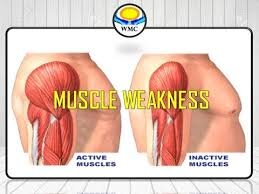
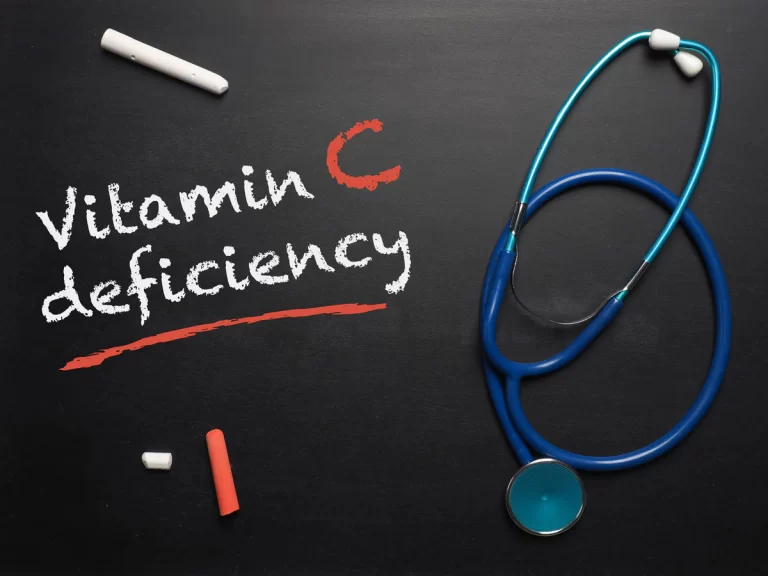
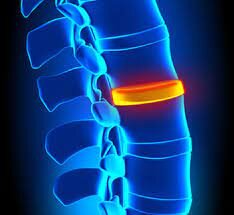
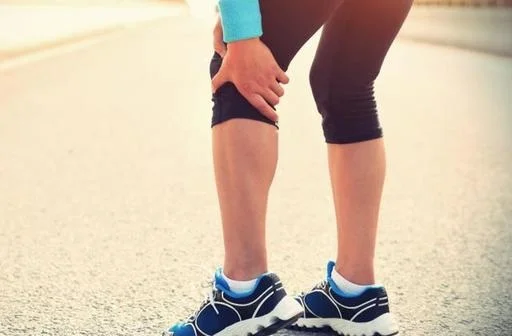
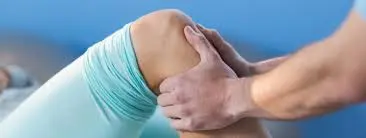
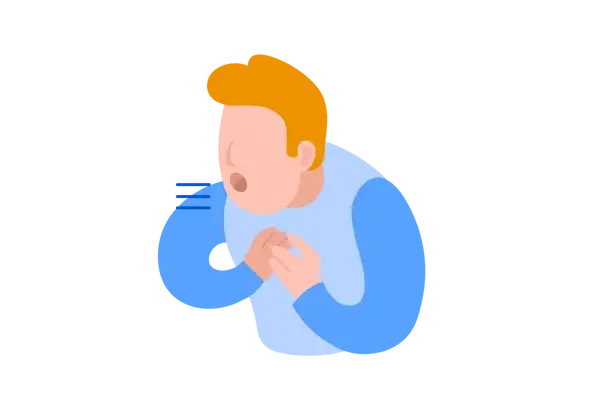

26 Comments